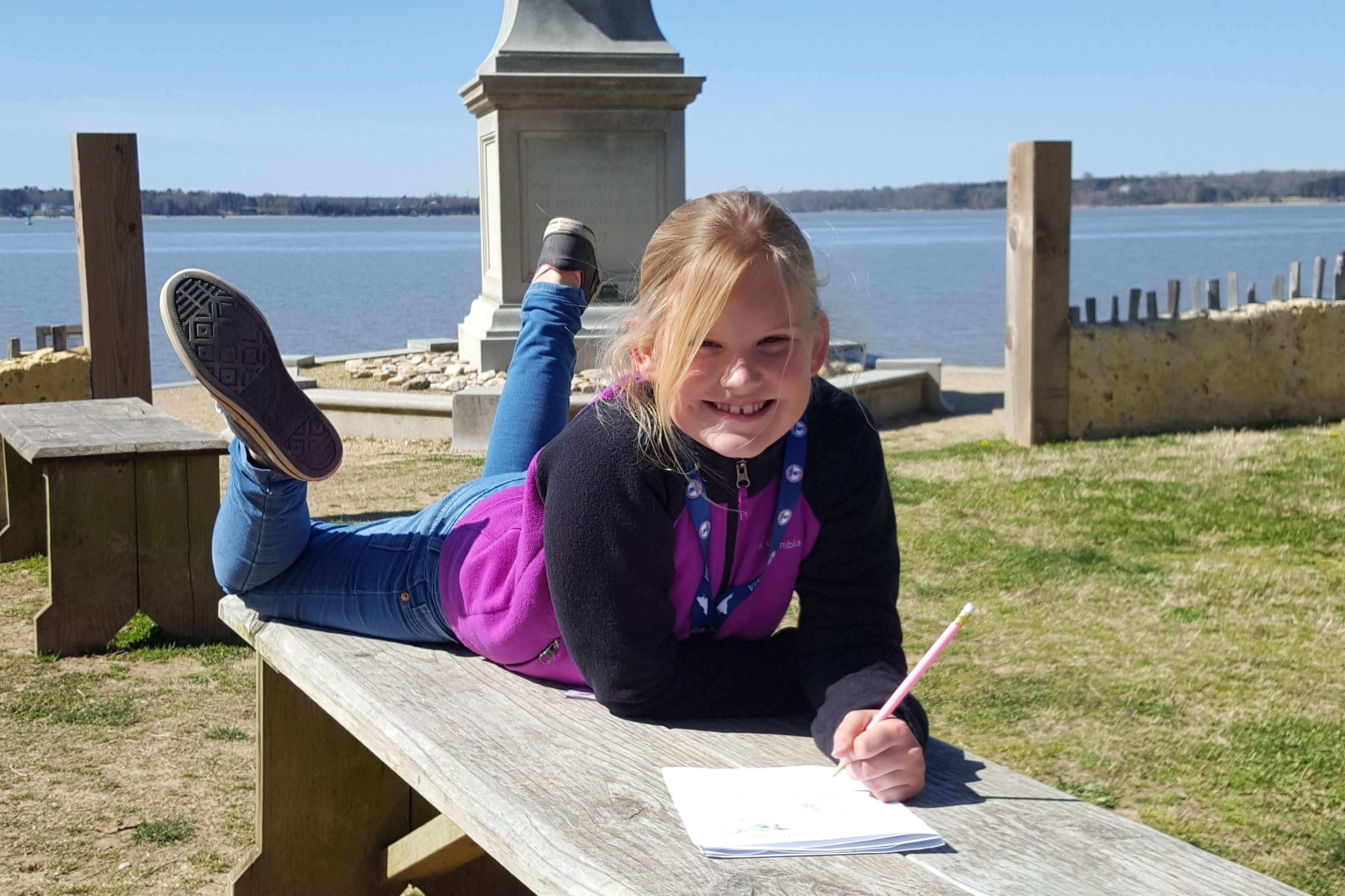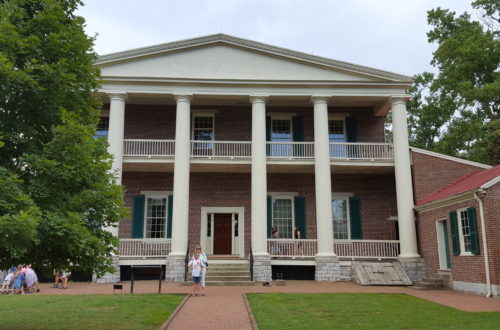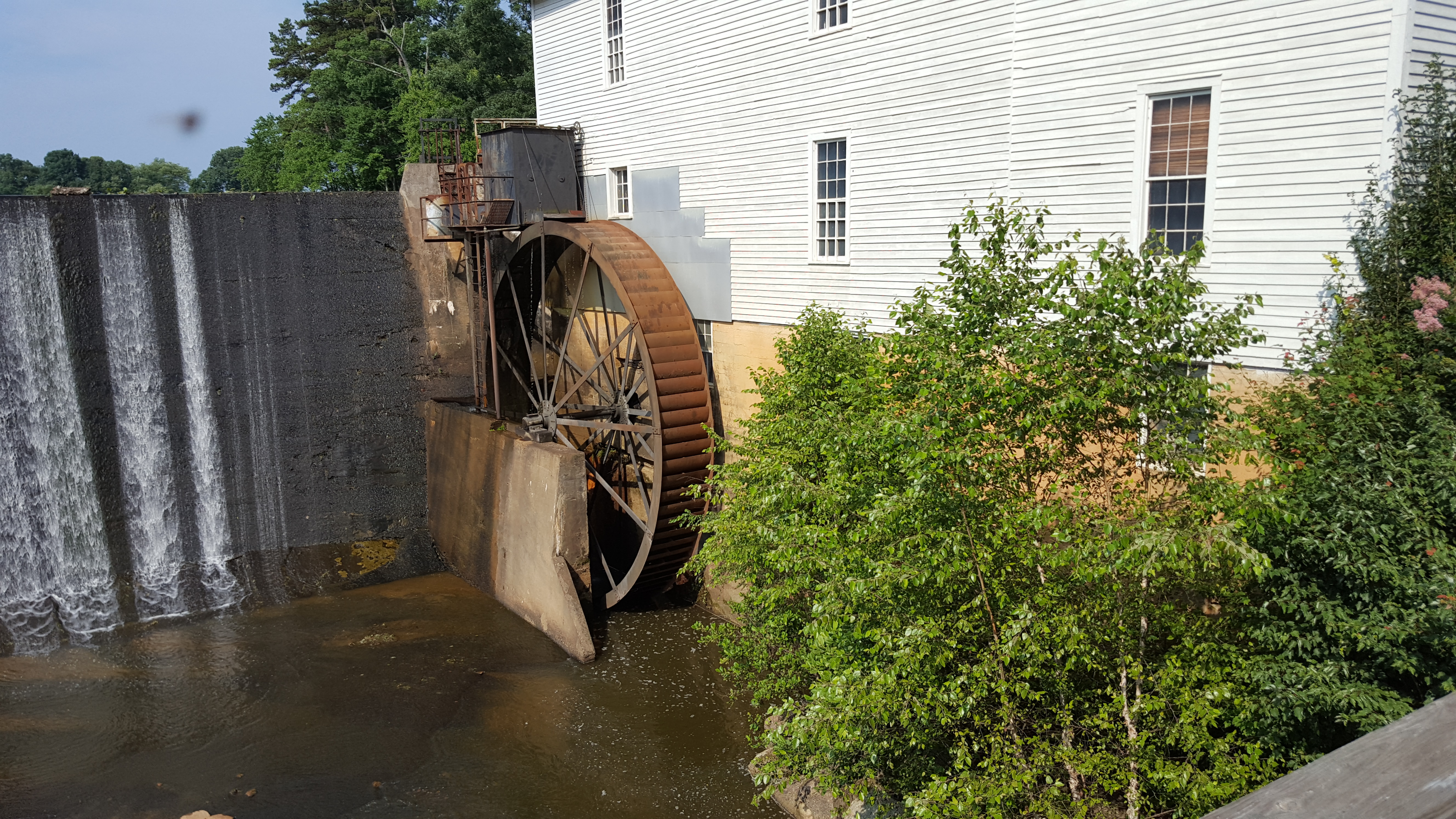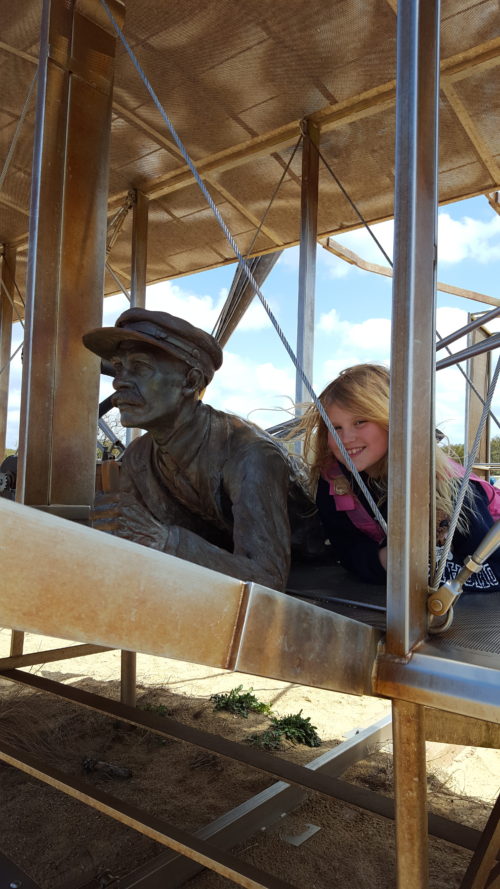
Junior Ranger Program
Junior Ranger programs offered by National Park Service are the best nature and history activities we’ve found for children ages 5 to 13. If you have children or grandchildren, you’re probably constantly on the lookout for affordable, kid-friendly things to do. As grandparents we want our grandchildren to love exploring nature and learning history … activities that we enjoy as grandparents. My family loves visiting historical and nature parks. There are 59 national parks and another 350+ historical or protected locations. Many are free but some you must pay to visit. But, (drum roll, please) if you happen to have a 4th grader the National Park Service offers a free pass for that student and family which is good for one year.
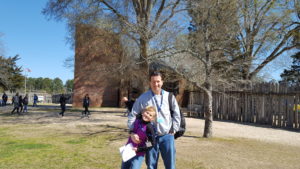
No 4th grader? If you plan to visit many locations you might consider investing in a National Parks Annual Pass to take full advantage of all the things the parks have to offer. Military, volunteer, and senior passes are also discounted.
Wondering what the Junior Ranger program is? Let me give you my take on it:
Choose a Park
We have planned vacations around a series of National Parks or Memorials like our recent trip to Williamsburg which included days at Jamestown, Yorktown, Wright Brothers, and Fort Raleigh (Roanoke Island/Lost Colony). Although Williamsburg is not a National Park, the other four locations all are. That was a 9-day trip. But, most of our Junior Ranger experiences have been day trips or side trips as we travel to a destination.
To give you an idea of the pricing, the cost of Wright Brothers Memorial is $10 for an adult but children under 16 are free. Jamestown is $14 for an adult but children under 16 are free. Yorktown is $7. Fort Raleigh visitors center, museum, and grounds are free but there are charges for entertainment venues like The Lost Colony play.
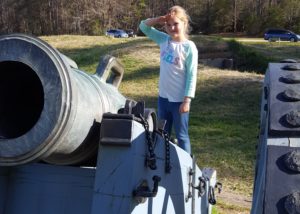
Visit Find a Park to choose a site you’d like to visit. Not traveling any time soon? Consider completing Junior Ranger activities at home: !0 Junior Ranger Badges to Earn at Home
Get a Junior Ranger Book
When you arrive at a national park or memorial you will go to the ranger station office or visitors center to pay or present your annual pass (if necessary). This station is also where you can start your Junior Ranger experience for that park.
The program is completely free once you enter the park. Ask the ranger for a Junior Ranger book. Most of the books are professionally printed and are very nice. We’ve had a few experiences where we’ve had to pay $1 to $3 for a photocopied booklet but that has been at an extremely popular and busy site like Jamestown. Be sure to bring a pen for each child. I suggest a pen because if pencil leads breaks it might cause a major meltdown! Just saying…
Now that you have your book you’re ready to start exploring. The requirements are different at different parks for various ages. The Rangers will explain exactly what you need to do, making it super easy to help your kids complete the activities. For example, at the Wright Brothers National Memorial, ages 3-6 complete pages 1-3; ages 7-11 complete pages 1-7; and ages 12 and older complete page 1 and 6-14. If the site has a visitor’s center it may show a brief film explaining the history of the site and some answers are contained in the film. Answers might be found on displays inside the museum. We have found it helpful and necessary to pick up and read through a park map because many of the answers are in that literature. Young rangers will spot certain animals and plants, draw some pictures, and answer a few thought-provoking questions. Everything in the book may be done during one visit to the park.
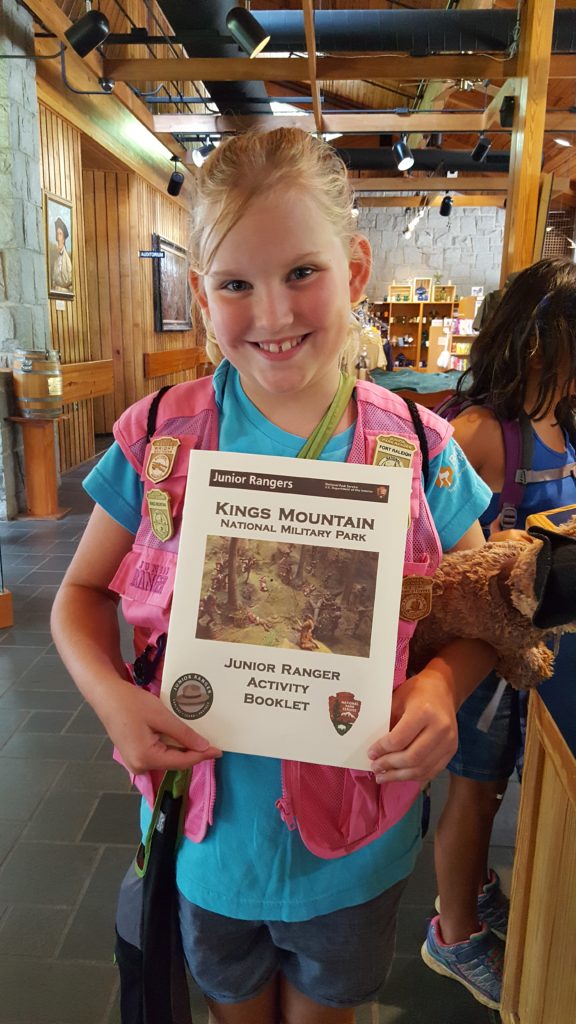
Engage your kids
Our 9-year-old granddaughter is naturally excited by nature and history. The Junior Ranger program is a perfect program for her, and she’ll happily fill out the entire book and share everything, and I mean everything, she has learned or spied. We make the day a rewarding experience for her and for us.
The experience is more engaging and fun when we:
- Talk about it — Driving to the park we talk about the historical significance and what we hope to see. Along the hike, we talk about the beauty of our surroundings and plant and animals life. Stop and just listen … birds, creeks, wind blowing branches, etc. Carry light-weight books to help name birds, flowers, and trees. Talk about the history of the monuments and old buildings. Talk about what it might have felt like to live in this time period. Encourage your junior rangers to do any and all hands-on activities.
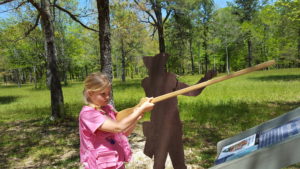
- Purchase audio – if the park offers an audio narrative it’s nice to get it. Last year we went to Yorktown and took the driving tour. Without the audio ($5 CD purchased in the gift shop) we would not have understood as much of the history of the area or know how to reach significant monuments. Audio also shares engaging stories of the people involved. Ask for “kid-friendly” audio.
- Bring a camera – of course, we have our mobile phones but HDH also has her own camera. She has taken some amazing photos from her 4’8” perspective. The camera keeps her engaged and focused and I don’t have to give her my phone.
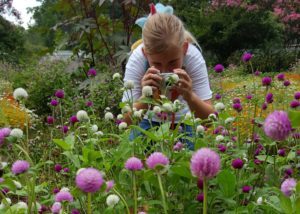
- Pack a lunch – some exploration may take more than a few hours so we always pack water, snacks, and lunch. Each family member has their own backpack with the bare necessities. My husband received a cooler/backpack as a gift from our oldest daughter, Amy. We don’t leave home without it. Our REI cooler is so old they don’t sell it now but here are some ideas: Amazon Cooler Backpacks and REI Cooler Backpacks
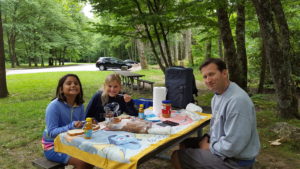
- Vary the activities – Many parks offer alternatives to hiking. We have gone canoeing, kayaking, tubing, biking, and horseback riding. We also vary the kind of parks we visit — historical or nature. Sometimes we take the ranger-led tours but usually, we explore at our own pace.
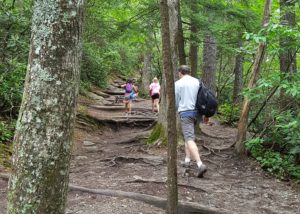
- Explore the surrounding area – sometimes we find another great activity to do on the same day as we visit a national park such as roaming a small town, visiting an art fair, ice cream factory, old hardware store, or having lunch at a unique “mom and pop” restaurant.
Claim your badge
-
- When you’ve toured the area and finished filling out your book, head back to the ranger’s station. The Ranger will look over the pages, engage your child in conversation, and then hold a brief ceremony initiating him or her as a Junior Ranger presenting him or her with a little wood or plastic, pin-backed Junior Ranger badge.
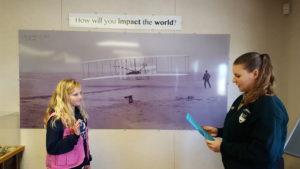
Swearing in ceremony at Wright Brothers Memorial
Warning: The visitors center or ranger station often closes earlier than the park as their hours are more like 9 to 5. If you miss collecting the badge you can mail the booklet to the address on the back and they’ll send the badge in the mail. To avoid tears consider the time constraint so you guarantee that your young explorer goes home with a badge.
Display Badges
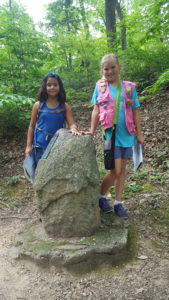
Junior Rangers love collecting badges during their travels. However, due to their size, they are easy to lose so come up with some way to display the badges. Many of the park stores sell items for displaying badges such as a vest (pink and green in sizes XS to XL) Our granddaughter always wears her pink vest when we travel and brings her Passport to National Parks Book that lists many of the parks by region and a blank section for stamping date and distinct logos for each park. You can buy stickers to go in the book, too. There’s a lot of stuff you can buy at NPS Online Store much of which is not available in park stores. Got this coupon code just yesterday — KINGSMOUNT — which saves 20% on your next purchase until October 1, 2018. Amazon sells the Junior Adventure Vest which I actually like more than the “official” NPS vests.
Too old for Junior Rangers? After exploring the site treat yourself to a patch, sticker, walking stick emblem, book, t-shirt, etc.
As you can tell I LOVE the Junior Ranger program. This program has given our granddaughter opportunities to explore and to enjoy nature and grow to love history.
